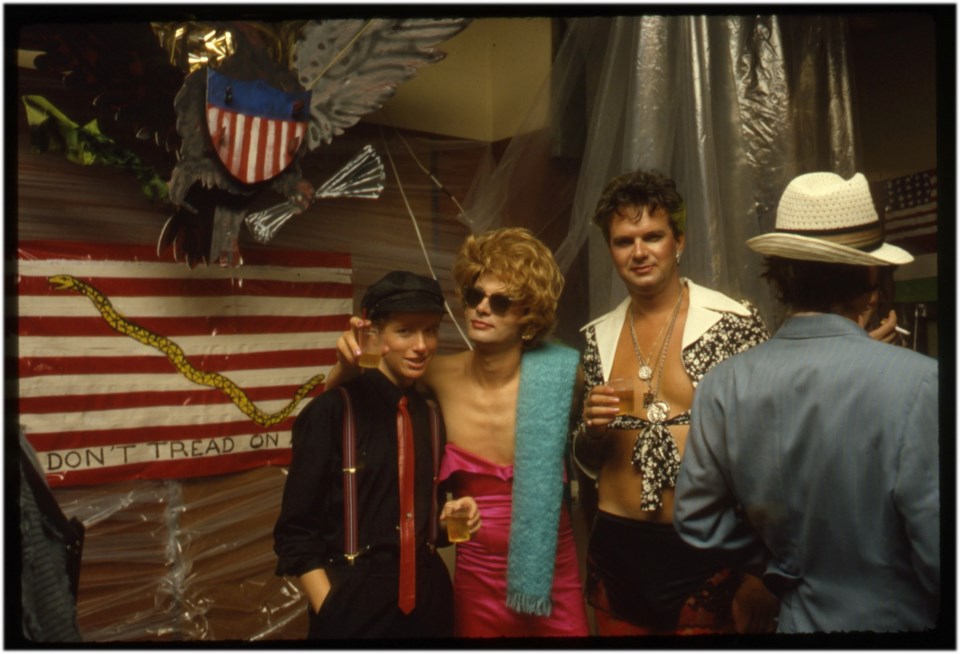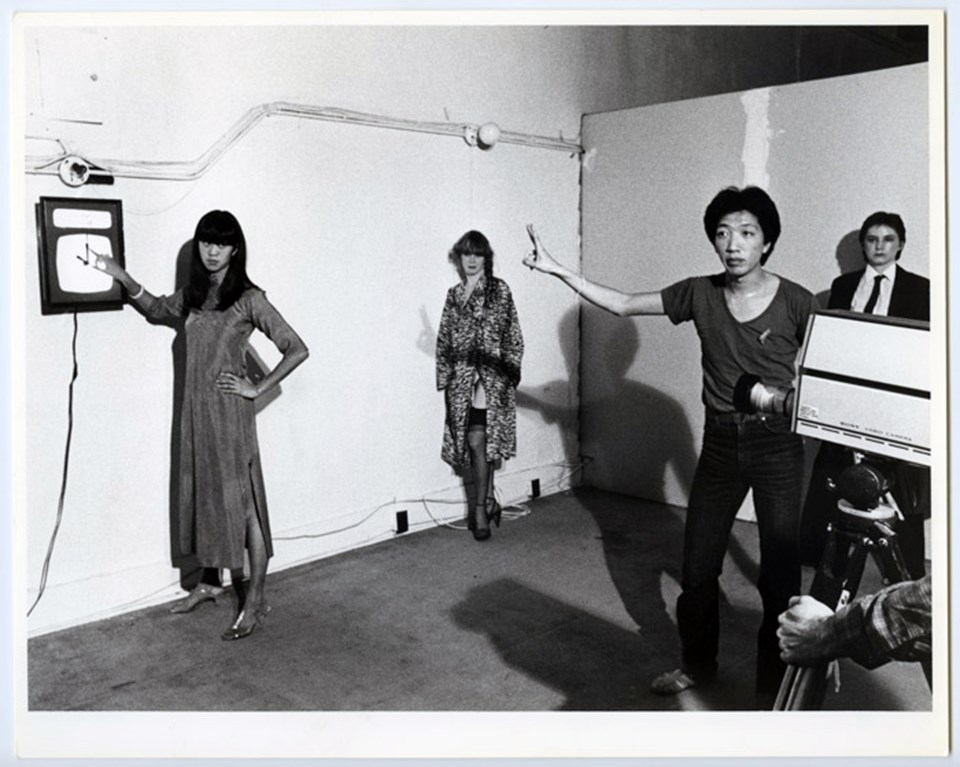Forty-three years ago, a group of Main Street teens discovered portable video cameras and started elevating their lives into art.
This feared and revered collective of Kenneth Fletcher, Deborah Fong, Carol Hackett, Marlene MacGregor, Annastacia McDonald, Charles Rea, Jeanette Reinhardt and Paul Wong were known as the Mainstreeters – a liberal, experimental “art gang” who left an Andy Warhol-like Factory scene of parties, glam punk, grit and garbage in their wake.
Inspired by the emergence of video as an art medium, the group filmed works such as 60 Unit Bruise (1976), in which Wong injects his blood into Fletcher’s shoulder in a homoerotic “blood-brothers” ceremony (made even more disturbing in hindsight by the AIDS epidemic that had yet to erupt), and the girl power-fuelled ‘4’ (1980).
“We talk now about social practice, we talk about a certain kind of work that involves situations and performance, and these guys are really doing that all along,” says Allison Collins, co-curator of the exhibition Mainstreeters: Taking Advantage, 1972-1982, opening tonight (Jan. 8) at Satellite Gallery. “And they’re really building on a history of that sort of activity in Vancouver coming out of (‘60s art collective) Intermedia, coming out of the hippie era. And they’re doing it at this incredible moment of punk and glam. They just kind of embody it all and have a certain kind of effervescence.”
Mainstreeters, an exhibition, website, and impending publication, examines their creative output and coming of age on Main Street, once the dividing line between the west side’s Anglo middle class and the more multicultural, blue-collar east side.
“That allows another kind of movement, sort of back and forth between the punk rock east side, and the more glammy west Vancouver life,” explains Collins of the geography. “You kind of feel like you’re in the middle and can go both ways, and these guys did. And also, being in the centre of they city, they invited people to them. They saw themselves as a sort of centre of the city.”
Mainstreeters, curated by Collins and Michael Turner, is a coproduction of grunt gallery and Presentation House Gallery, and presented by Satellite Gallery. It launched Dec. 2 with the release of a video documentary chronicling the lives of the group.
< br/> The exhibition features selected images, videos and texts, culled from the artists’ extensive archives. Throughout the exhibition, Mainstreeter videos will be presented in storefronts along Main Street, and the project will be complemented by a publication featuring photographs and documents to be released this summer.
“[Mainstreeters is] a kind of picture of the scene they created around themselves,” says Collins. “Not just these artworks they made, but the social manufacture that comes out of all this activity that they did, which at the time wasn’t always considered as art.”
According to Collins the Mainstreeters represent an under-recognized chapter in the Vancouver art scene, especially for the dominant role of the women within the group.
“You don’t really see instances where people talk about the important contributions of women to the Vancouver art scene,” says Collins. “I think that they were more than just muses – they were active forces. And they were sort of equal to all their counterparts in this way that a lot of other women at the time probably were as well, but it doesn’t quite get remembered.”

Emerging from high school with film and video cameras in hand, they drew from glam, punk and a thriving gay scene. They did drugs. They held elaborate drag balls. And much like the current “digital natives” generation whose lives are unfolding on social media, the Mainstreeters documented their drama, excess, camaraderie and, ultimately, grief.
“The death of Kenneth Fletcher really caused a schism for them, and created a real transformation in the way the group operated,” says Collins.
Fletcher committed suicide at the age of 23.
“He was a really interesting artist and really central to the group. When he died it really blew them apart and it was really hard for a lot of them to talk about it.
“That was one of the things that made this exhibition tricky,” she continues. “But it’s also particularly poignant, I think, to try and investigate a group in a way that’s anthropologically sound, where you’re respecting people as individuals as much as trying to explore them as a kind of entity.”
Upon Fletcher’s passing, the Mainstreeters underwent a period of mourning and took up residence at his home to care for his personal belongings and his cats. Ennui, a magazine created by Hackett, Rea and Mary Janeway, was conceived during this period, while Wong created the video installation piece in ten sity, which was exhibited at the Vancouver Art Gallery in December 1978 and dedicated to Fletcher.
They drifted apart after that.
“I think that when the Mainstreeters stopped collectively operating, let’s say – doing things together, making big events, continuing to make collaborative artwork – that part of their identity ended in a way.
“They were this connecting line, but as most of the work that they did didn’t have a physical output other than these video documents and scenarios and situations, it has largely become unknown.”
Mainstreeters: Taking Advantage, 1972-1982 runs Jan. 9-March 14 at Satellite Gallery (560 Seymour, 2nd floor). Opening reception: Jan. 8, 6-9pm. SatelliteGallery.ca


